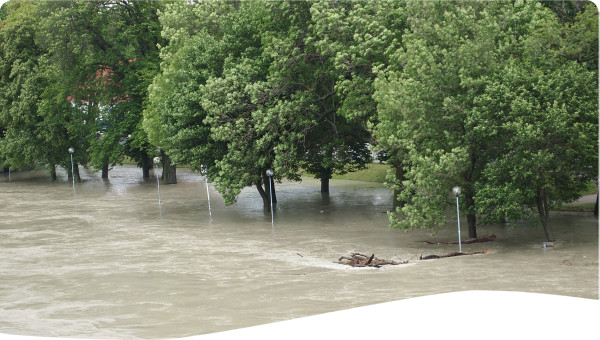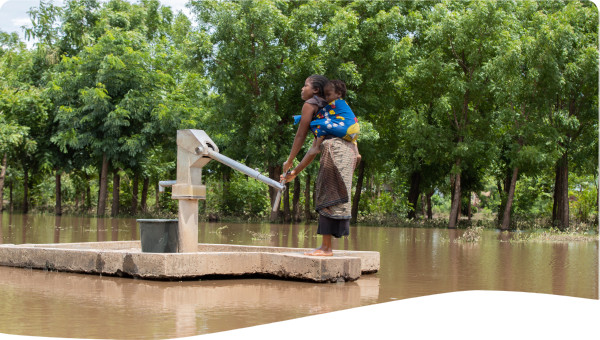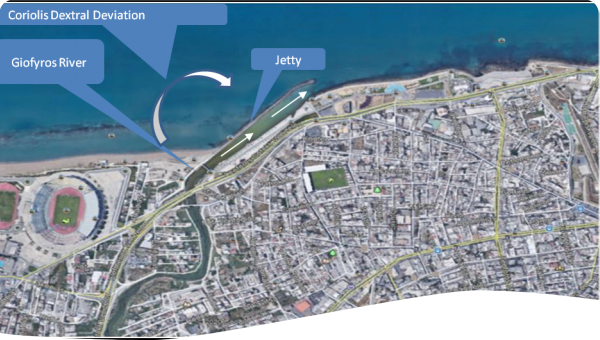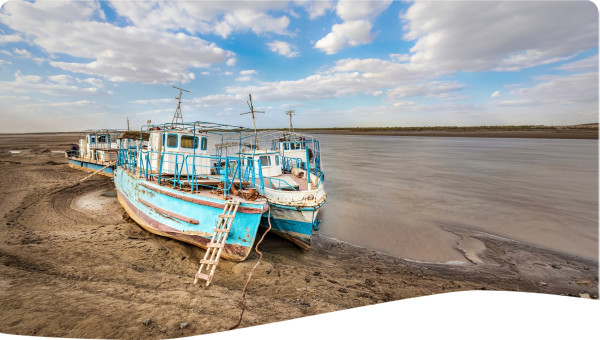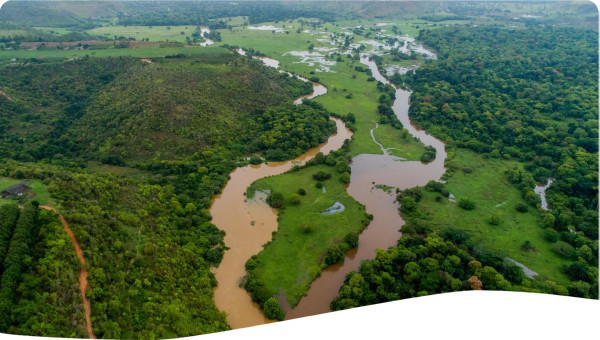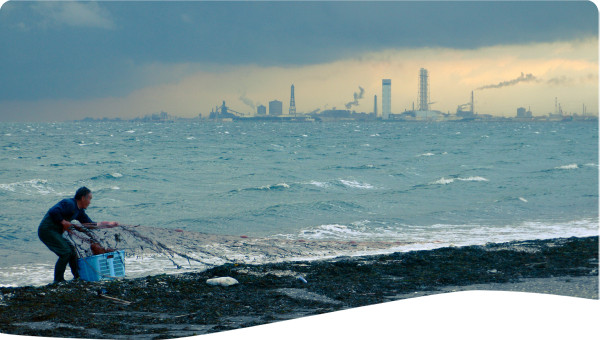 Tool -
Tool -
Risk is generally defined as the possibility of loss or having an undesired outcome resulting from exposure to hazard(s). Water-risks broadly refer to those risks that are associated to various water-related challenges, i.e., water scarcity, water stress, pollution, ecological and climate hazards (flooding and drought). These challenges are multidimensional, that not only put an individual to the risk but also tend to have severe impact on overall social conduct, business as well as economy. The intensity and severity of water risk has exacerbated due to overgrowing population and climate extremities all around the globe affecting every aspect of society but some sectors, especially those with high water usage dependency, e.g., agriculture, industries, mining, water supply and energy, are even more so vulnerable.
In context of corporate water stewardship (Tool C5.05), the terminologies of water-related challenges, i.e., water scarcity, water risk and water stress has been used interchangeably by various corporate water tools and initiatives. WRI Aqueduct and WWF Water Risk Filter are widely accepted and commonly used tools to assess water risk, including in business sector. These tools employ a similar foundation of water risk framework illustrated in Fig. 1.
Figure 1. Relation between water challenges to water risk (Adapted from CEO Water Mandate, 2014)
Both water risk tools classify water risks into following main categories but have different risk sub-categories and indicators.
- Physical (quantity/ quality) risks refer to the lack or overabundance of water and water that is of unfit quality
- Regulatory risks relate to how water resources are publicly managed and how water use rights are distributed
- Reputational risks are linked to how key stakeholders –communities, customers and NGOs– perceive a water actor, typically utility providers and government regulatory agencies, manage water related decisions.
The basic principles to approach risks are avoiding risks, assessing risks and reducing/controlling risk. Actions or substance that subsequently create threats or risks should be avoided in the first place, if not those risks should be managed properly. Risk assessment usually relates to a particular exposure and aim to show who or what is most at risk: populations, communities, infrastructure, or the environment that provides valuable evidence for decision-making.
Risk assessments in the water sector is beyond the limit of classification of natural and anthropological hazards along its exposure. However, it further involves holistic understanding of social, economic, and political systems as risk generators. For instance, the indicator of the reputational risks consists of the cultural diversity and hydro-political conflicts and the analysis of which is very sensitive and political. Thus, the water risk management should involve multi-stakeholder engagement (Tool B3.05) and ownership involving local authorities (Tool B1.02), national apex bodies and etc.
The general stages of risk assessments are:
- Stage I: Risk identification: This stage helps to find out and recognize all likely hazards and significant consequences as risk scenarios through qualitative methods, surveys, and interviews.
- Stage II: Risk Analysis: It is the process to comprehend the characteristics and nature (location, intensity, frequency, and probability) of risks to determine their level of impact. Risk matrix is a technique that is used to rank the level of risk in a quantitative manner that provides the information of the severity and probability of the risks urging the decision makers to either reduce the prevailing risks or develop the alternative coping capacities in respect to likely risk scenarios (Figure 2).
- Stage III: Risk evaluation: Risk evaluation is the process of comparing the results of risk analysis with risk criteria to determine whether the risk and/or its magnitude is acceptable or tolerable. The risk criteria include, cost and benefits, legal requirements, socio-economic and environmental factors, and concerns of stakeholders. It is used to make decision about the significance of risk whether each specific risk should be accepted or treated.
Figure 2. Risk matrix
As per the risk management strategies, after the risk evaluation, the risk is either avoided or treated to reduce its impact on the system. The results of risk assessment can be mapped to enhance the visualisation of risk with the help of Geographic Information System (GIS) (Tool C3.01) and remote sensing techniques through preparation risk/hazard maps. For instance, flood and droughts maps help to visualise the extent of the hazard as well as provide a basis for historical trends. The other important role of risk maps is to ensure that all actors in risk assessment have the same information about hazards and in the dissemination of the risk assessment results to stakeholders.
Risk assessment provides a tool to identify specific hazards, analyse the risk associated with them and determine appropriate ways to eliminate or control those hazards. The characterisation of hazards or water challenges in terms of location, intensity, and severity. There are numerous tools and methods developed to assess the water risk. However, the tools listed below are some of the most commonly used tools for assessing risks in the water sector.
World Resource Institute (WRI) Aqueduct
The Aqueduct information platform by the World Resource Institute (WRI) contains four free online tools among which, Aqueduct Water Risk Atlas is a core tool that has been widely used globally. The WRI Aqueduct contains 13 global water risk indicators organized into 3 categories: physical risk quantity, physical risk quality, and regulatory and reputational risks having stronger emphasis on physical risk. It uses global data on the water risk and uses hydrological sub-basin- Hydro SHEDS Hydro BASINS level 6 for spatial resolution. The map on aqueduct water risk atlas can be prepared by adjusting the data from indicators and then the model (PC Raster Global Water Balance) calculates the overall risk by taking weightage average of individual indicators of sub-group.
World Wildlife Fund (WWF) Water Risk Filter (WRF)
The WWF Water Risk Filter is a free online tool that enables companies and financial institutions to explore, assess, respond, and value water risk worldwide. This tool categorized risk into 3 risk types: physical, regulatory, and reputational with 12 risk categories and 32 water risk indicators. In addition, the Water Risk Filter also contains high-resolution data for 12 countries. It assesses both the basin and operational risks where; operational risks are assessed using either a short questionnaire (10 drop down questions) or a more detailed questionnaire (45 questions) depending on user needs. This tool also consists of respond section which aims to guide users to identify relevant water stewardship actions to address their unique water risks as well as value section to explore how water risk-driven events can impact a site’s finances.
World Business Council on Sustainable Development’s (WBCSD) India Water Tool
The WBCSD India Water Tool (and previously the WBCSD Global Water Tool) primarily focused on physical water challenges – notably status, scarcity, quality and ecosystems. It provides granular and user-friendly information on water to help companies to understand their risk and plan water management interventions in India. It contains 13 physical data layers with pan-India data, and 8 layers with meso-watershed level data. These layers are grouped into a series of sub-categories including point data, boundaries, groundwater, and surface water and stress indicators (as well as localized data). This tool is rooted in the ability to assess the shared water challenges across India in a consistent manner.
The reference section of the tool consists of the step-by step- methodology of Water Risk Filter (WRF) to assess the water as well as report by the South pole and WWF on comparing the best practiced water- risk tool for different corporate sector.
